Ranked! The 50 best football teams of all time
The best football teams ever – club and country – following rounds and rounds of arguments from the FourFourTwo team
10. Hungary 1950-56
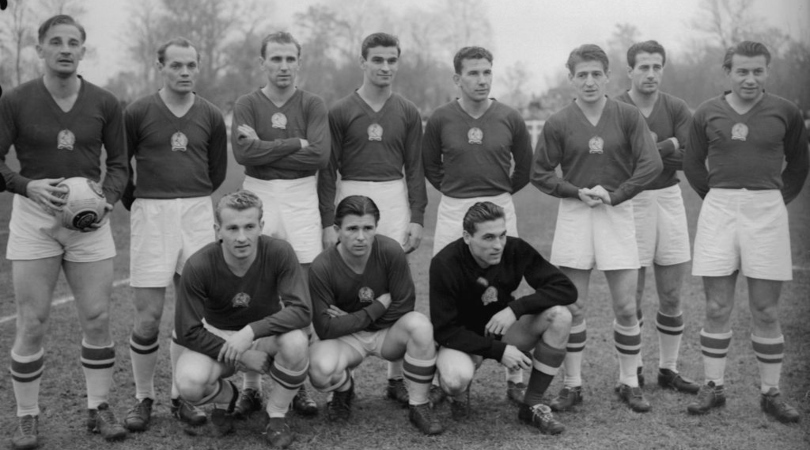
The Magical Magyars came together under Gusztav Sebes, a cobbler’s son who advocated “socialist football” – a Total Football precursor in which players could swap positions at will.
Almost unbeatable – between May 1949 and February 1956 they lost just twice – Hungary won the 1952 Olympics and were invited to Wembley for a November 1953 friendly. Deploying centre-forward Nandor Hidegkuti in a deep-lying role, they hammered England 6-3; the English demanded a rematch, and were duly walloped 7-1.
The 1954 World Cup should have been their coronation. They hammered South Korea 9-0 and West Germany 8-3, eased past Brazil 4-2 in a bruising quarter-final and beat holders Uruguay 4-2 in a flowing semi to reach a final against West Germany’s amateurs. Astonishingly, the outsiders came from 2-0 down to win in disputed circumstances.
9. Santos 1955-68
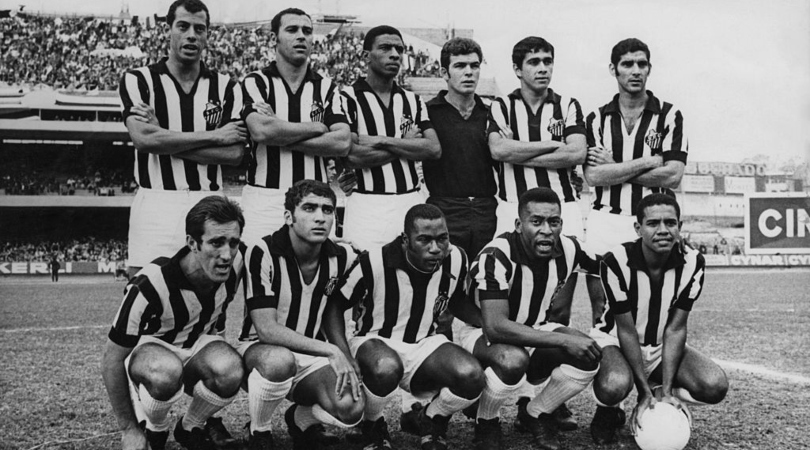
Not many teams can boast nine World Cup winners. And only one had the “The Athlete of the Century” up front during his peak. This is why Pele’s Santos feared no side, dominating the Brazilian league when it was at its strongest. Their motto was simply unrefined: “if the opposition scores once, we will score three.”
It didn’t matter if the opposition were a local side or the almighty Benfica at the Stadium of Light. This swashbuckling arrogance was especially evident in 1962 and 1963, when they won the Intercontinental Cup twice (Benfica and Milan), and prevailed in legendary match-ups against Garrincha’s Botafogo – encounters that were so fluid they could have been a work of art.
8. Inter 1962-67

The team that defined the way we still think about Italian football. Argentine boss Helenio Herrera didn’t invent catenaccio, but his modified version – a 5-3-2 with a libero behind the defence and half-backs launching speedy counter attacks – was implemented so precisely that his side came to embody it.
Herrera’s men won three Serie A titles, and back-to-back European Cups in 1964 and 1965. While there were some brilliant performers in the side – Armando Picchi the all-important sweeper, rock solid full-backs Tarcisio Burgnich and Giacinto Facchetti, Luis Suarez a fine playmaker, Jair, Mario Corso and Sandro Mazzola forming a harmonious yet devastating midfield – this Grande Inter side were always seen as Herrera’s baby.
The best features, fun and footballing quizzes, straight to your inbox every week.
7. Spain 2007-12
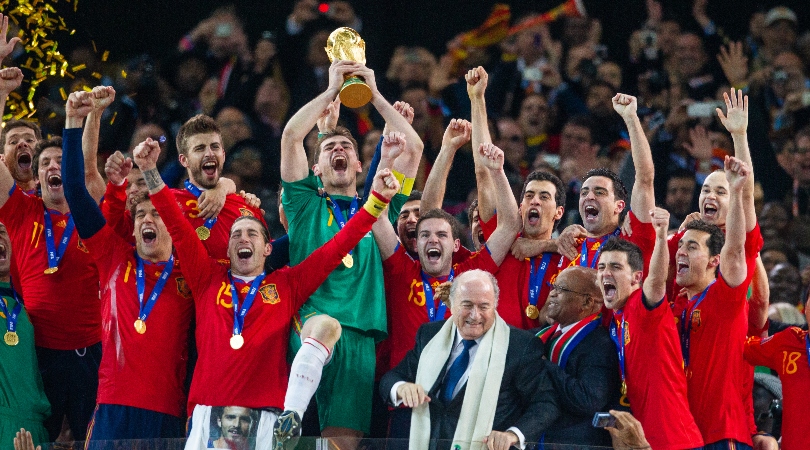
There was a time when Spain were football’s great underachievers, but at Euro 2008 it all came together. Uniting a previously disparate squad, Luis Aragones harnessed possession-minded midfielders like Xavi, Andres Iniesta, David Silva and Cesc Fabregas, and married the aesthetic to the athletic as La Roja secured the trophy.
Aragones was then replaced by Vicente del Bosque, who encouraged his players’ confident domination of possession, as typified by Pep Guardiola’s iconic Barcelona side; Spain swept to the World Cup with a perfect qualification record, then went all the way in South Africa.
They made it three tournament triumphs in a row at Euro 2012, but that would be the end: at Brazil 2014, Spain lost 5-1 to the Netherlands and were home before the postcards.
6. Liverpool 1975-84
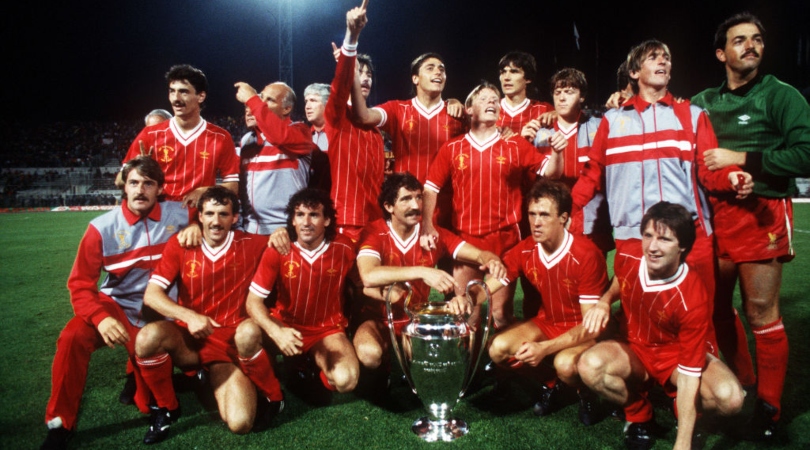
The year after taking over from Bill Shankly, Bob Paisley’s team finished second in the 1974/75 table. “I considered it a real failure,” admitted the new gaffer. “We never celebrate second place here.”
He hardly ever had to again: over the next eight seasons, the Reds won the league seven times, along with four European Cups and four League Cups, creating England’s first genuine football dynasty.
That they did it while remaining so well-liked by neutrals is remarkable, and a testament to a thrilling brand of pass-and-move play. Shankly had called it “a simple game based on the giving and taking of passes.” His successors honed it to perfection.
5. Barcelona 2008-11
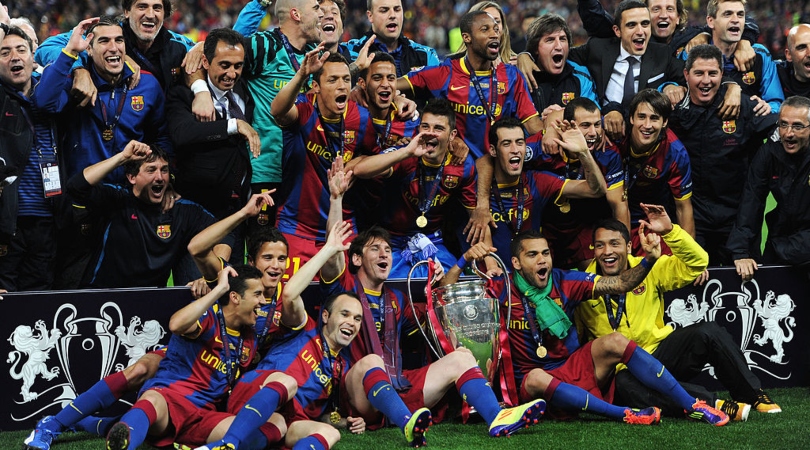
In 50 years’ time, when most of us will be eating through a straw, we can die happy that we saw one of the greatest sides ever performing at the apogee of their celestial talent. In introducing tiki-taka – originally intended as an insult – to the footballing lexicon, Barça re-wrote the beautiful game’s playbook in their own, perfectly formed 4-3-3 image.
Winning an unprecedented sextuple in his first season, Pep Guardiola achieved Nirvana by moving Lionel Messi infield. The 3-1 victory against Manchester United in the 2011 Champions League Final – “no one has given us a hiding like that” admitted Alex Ferguson – merely confirmed what Real Madrid legend Jorge Valdano calls a “miracle generation”.
4. Real Madrid 1955-60
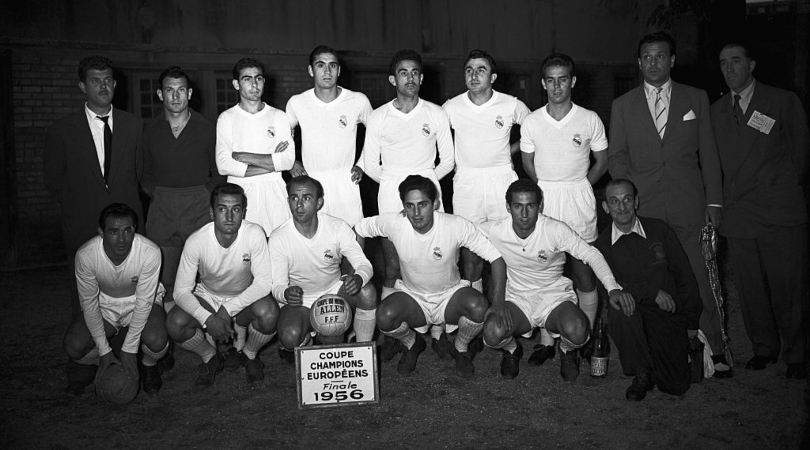
The influence of this team extends far beyond the talent of Di Stefano, Ferenc Puskas, Raymond Kopa and Paco Gento. Far beyond even the trophies they accumulated – and no other team has won five European Cups in a row, as they did, from 1956 to 1960.
This team, Alex Ferguson said once, invented the idea of a modern football club, signing the best players regardless of nationality, becoming synonymous with a particular style of football, and seizing the opportunity provided by the new European Cup to create a global brand.
The tawdry magnificence of the galactico era can be traced back to this polyglot side. This Madrid side, as Santiago Bernabeu said of Di Stefano, smelled of good football.
3. Milan 1987-91
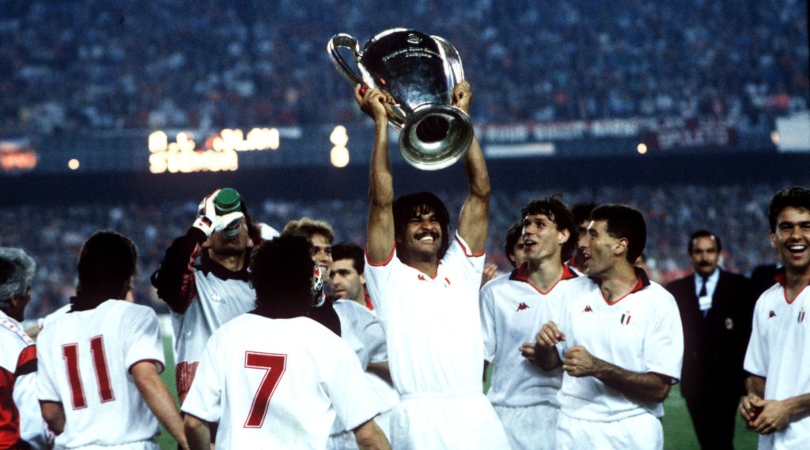
Italy’s most successful European campaigners have enjoyed several stellar vintages, but the perfect storm of style and success came in a four-year flurry that blew away Italy’s boring football reputation.
Playing a Total Football-tinged, high-pressing 4-4-2, Arrigo Sacchi’s side – which featured Dutch trio Ruud Gullit, Marco van Basten and Frank Rijkaard, with Franco Baresi and Paolo Maldini minding the shop in defence – dominated opponents physically and tactically.
In the 1988/89 European Cup they humiliated Real Madrid 5-0 in the semi-final second leg and Steaua Bucharest 4-0 in the final. Some argue the team who retained the trophy in 1990, letting in just three goals, was even more cultured.
2. Brazil 1970
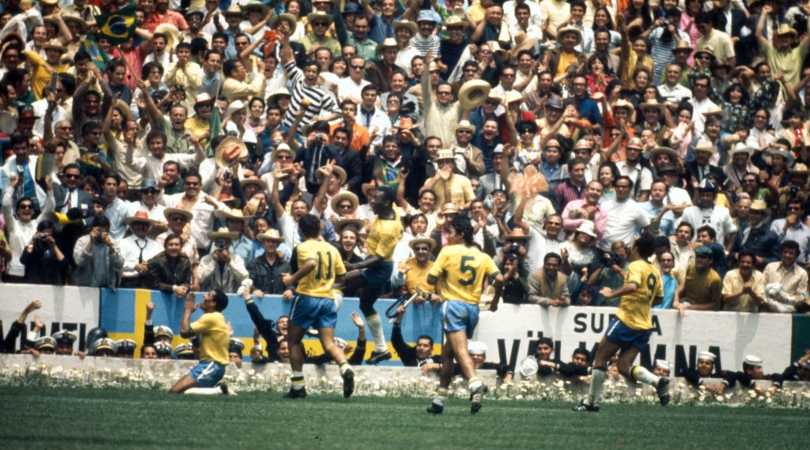
Brazil had had good sides before, but the team that swaggered to glory in 1970 will forever occupy a prominent place in the pantheon; this side represented the romantic ideal of football, the entertaining epitome of “You score four, we’ll score five”.
After being hoofed out of the 1966 tournament, Pele was at his peak in a team of showstoppers. Alongside him up top was Tostão, with Roberto Rivellino and Jairzinho providing the ammunition from the flanks.
Yes, the team had flaws. The back half wasn’t great, conceding against everyone but England. Yet even holding midfielder Clodoaldo dribbled past four Italians during a final that’s etched into legend as representing jogo bonito, the beautiful game, prioritising inventive attack over canny defence.
1. Ajax 1965-73
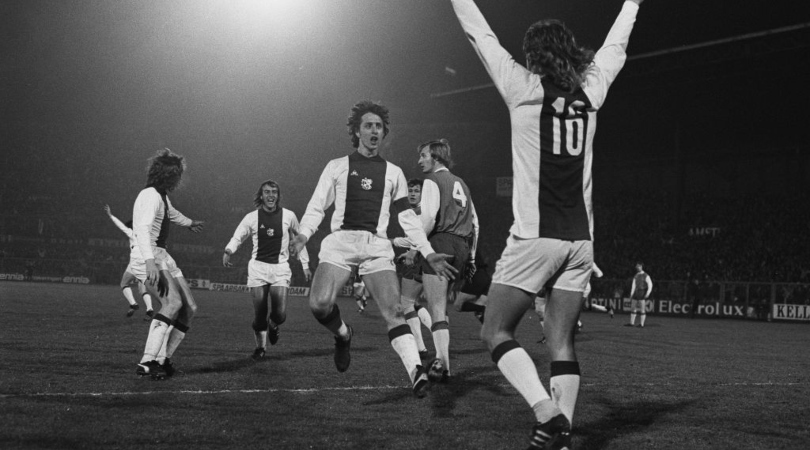
In coach Rinus Michels, the club’s trademark 4-3-3, chaotic position switching and teamwork was established; Total Football invented. When he left in 1971, replacement Stefan Kovacs afforded the team yet more attacking freedom.
Drifting centre-forward Johan Cruyff was the undoubted star, conducting his orchestra with typical pomp. Johan Neeskens provided midfield legs, Arie Haan and Gerrie Muhren the tactical discipline, centre-back Velibor Vasovic the Yugoslav steel.
Over 40 years since their pinnacle – a 1-0 win against Juventus to secure the 1973 European Cup, their third in a row – Ajax’s 4-3-3 remains football’s most flexible formation. But it’s the way they made you feel – the long hair, rock star swagger and beautiful play – that sets them apart.

Ryan is a staff writer for FourFourTwo, joining the team full-time in October 2022. He first joined Future in December 2020, working across FourFourTwo, Golf Monthly, Rugby World and Advnture's websites, before eventually earning himself a position with FourFourTwo permanently. After graduating from Cardiff University with a degree in Journalism and Communications, Ryan earned a NCTJ qualification to further develop as a writer while a Trainee News Writer at Future.
